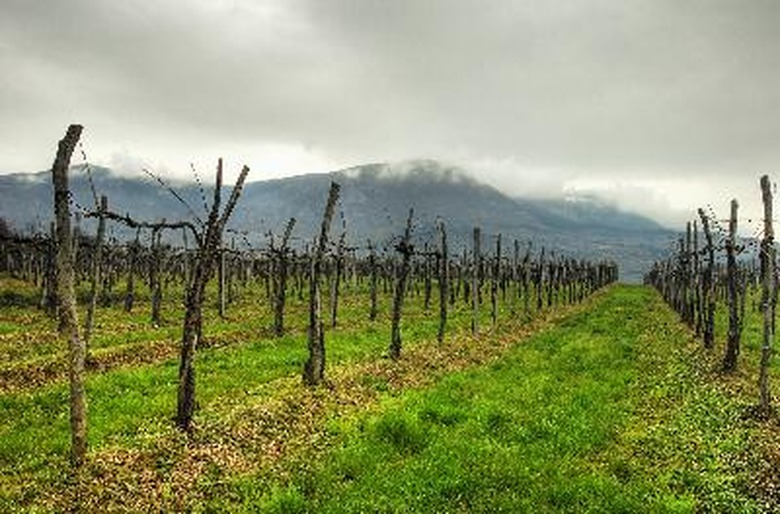When Is A Good Time To Prune Grape Vines?
Pruning is a crucial aspect of grapevine cultivation, affecting overall vine balance. Extensive pruning takes place mid to late winter after grapevines enter winter dormancy to encourage productivity and direct vine canopy and bud growth during the growing season. Bare, exposed canes signal the dormancy of the vine. Removing old wood to make room for new fruiting wood is the primary purpose for heavily pruning grape vines.
Timing and Temperature
Because only shoots growing from 1-year-old canes produce fruit, healthy new canes must be produced every year to maintain annual production of fruit. A pruning practice that facilitates the production of fruiting wood involves removing all of the previous year's fruiting canes or spurs (now 2 years old) and any excess 1-year-old canes. From January through early March, grape growers should remove about 90 percent of wood growth from the previous growing season — with the exception of new 1-year-old fruiting canes and renewal spurs (new trunks), according to Oregon State University's Department of Horticulture. Pruning in the fall may increase vine susceptibility to freeze injury during winter. Optimal timing for pruning occurs when winter's coldest temperatures have likely passed and when temperatures consistently maintain levels above freezing.
- Pruning is a crucial aspect of grapevine cultivation, affecting overall vine balance.
- Extensive pruning takes place mid to late winter after grapevines enter winter dormancy to encourage productivity and direct vine canopy and bud growth during the growing season.
Age Considerations
Cut back to two or three buds, a first-year vine should grow several shoots, promoting abundant leaf growth on the vine to permit the formation of a strong root system. The second year, remove flower clusters from the young vine as they form throughout the growing season. Implement typical pruning practices during the vine's third winter and allow fruit to develop during the following growing season. Old, neglected vines should undergo severe pruning in stages to minimize shock to the plant, removing dead and diseased wood first, continuing at intervals to remove old wood while leaving the new, 1-year-old wood growth.
Spring Pruning
In regions where risk of injury to the vine from severe winter weather exists, postpone heavy pruning until early spring. According to Cornell University, delay pruning through the winter months as long as feasible to reduce the danger of cold injury. If extremely cold temperatures do not occur in December, January and February, the danger of vine injury from cold is reduced. March may still produce damaging temperatures, but avoiding injury is more likely. Cornell University recommends examining the buds and proceeding on the basis of actual injury when the possibility of cold and freeze damage to grape vines exist, allowing you to compensate for actual injury losses.
- Cut back to two or three buds, a first-year vine should grow several shoots, promoting abundant leaf growth on the vine to permit the formation of a strong root system.
Fruit Thinning
Fruit thinning is a type of pruning that is often necessary during the growing season to control excessive fruit production by permitting no more than one fruit cluster for each rapidly growing shoot. Fruit thinning ensures maximum quality and ripening, and its effectiveness depends on targeting new growth as early as possible throughout the growing season. During summer bloom, remove small or imperfect flower clusters at their first appearance to promote growth of large clusters of large grapes.
